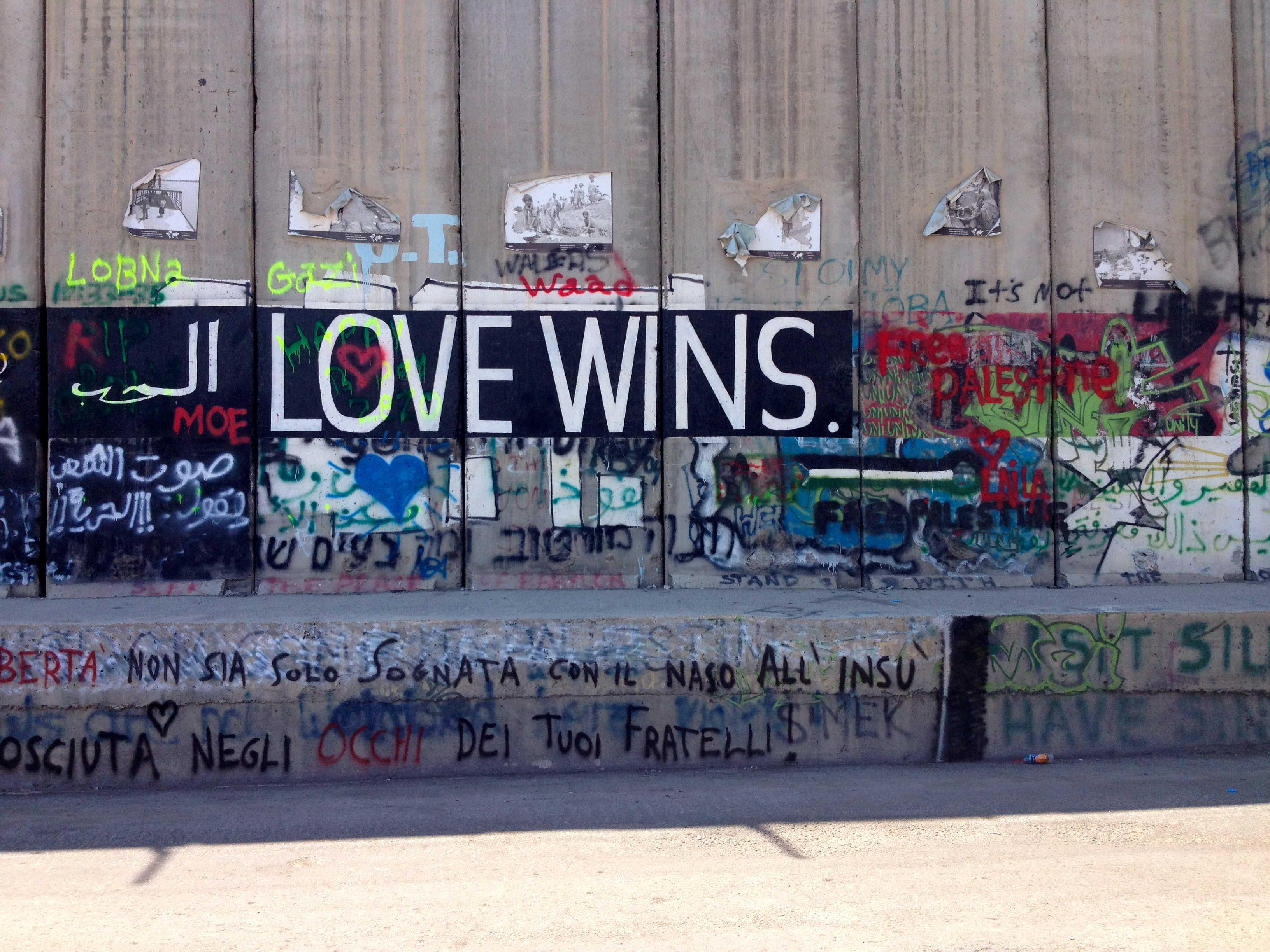
Angry red words in at least five different languages, Bible verses, men in chains, ladders to heaven, women weeping, and of course Banksy’s famous graffiti transforms what was once a blank, slate gray wall. This “modern artwork” has changed the separation wall between Bethlehem and Jerusalem from just stone to an even more powerful statement.
In 2005, Banksy, the anonymous graffiti artist, came to Bethlehem to add nine of his images to the separation wall on the Palestinian side. His images are subtle political statements—a girl rising over the wall holding a bunch of balloons, a sprayed on window depicting a sun lit landscape on the other side of the wall. Over the years, Banksy’s artwork has been built upon by other graffiti artists, and by people looking to express themselves.
Walking within the shadow of the wall, you can feel the anger, grief and bitterness emanating from the scrawled words and images. Shut in, Palestinians have used the wall as an expression of their anger.
“Earth has no sorrow that heaven cannot heal.”
“The only constant in the universe is change.”
“Free Palestine.”
“How many layers of paint will it take to tear this wall down?”
“Peace on Earth.”
“Made in the USA”
“Until justice rolls like water, and righteousness like a mighty stream.”
“Make hummus not walls.”
“Peace is not the opposite of war, it’s the absence of it.”
As my friend and I walked down the length of the wall, absorbed in the graffiti, we saw two children playing basketball in the street, with a hoop drilled high into the wall. As we pass by, they shrink back into the shadow and watch us with wide eyes, a wariness born of living next to the separation wall.
Seeing the graffiti on the wall, and those children within its shadow, serves as a reminder of how many sides and how many people have suffered in the conflict between Israelis and Palestinians. Among the quotes and Bible verses and painted chains, there are also statements like “Israel does not exist” – statements just as hurtful and wrong as the wall itself. Regardless of Banksy’s images of hope, of people eventually becoming free, the graffiti on the walls is mostly saddening. There are many sides to suffering. And there are two sides of a wall.

Jerelyn Luther ’16 is blogging this summer from Jerusalem, Israel.